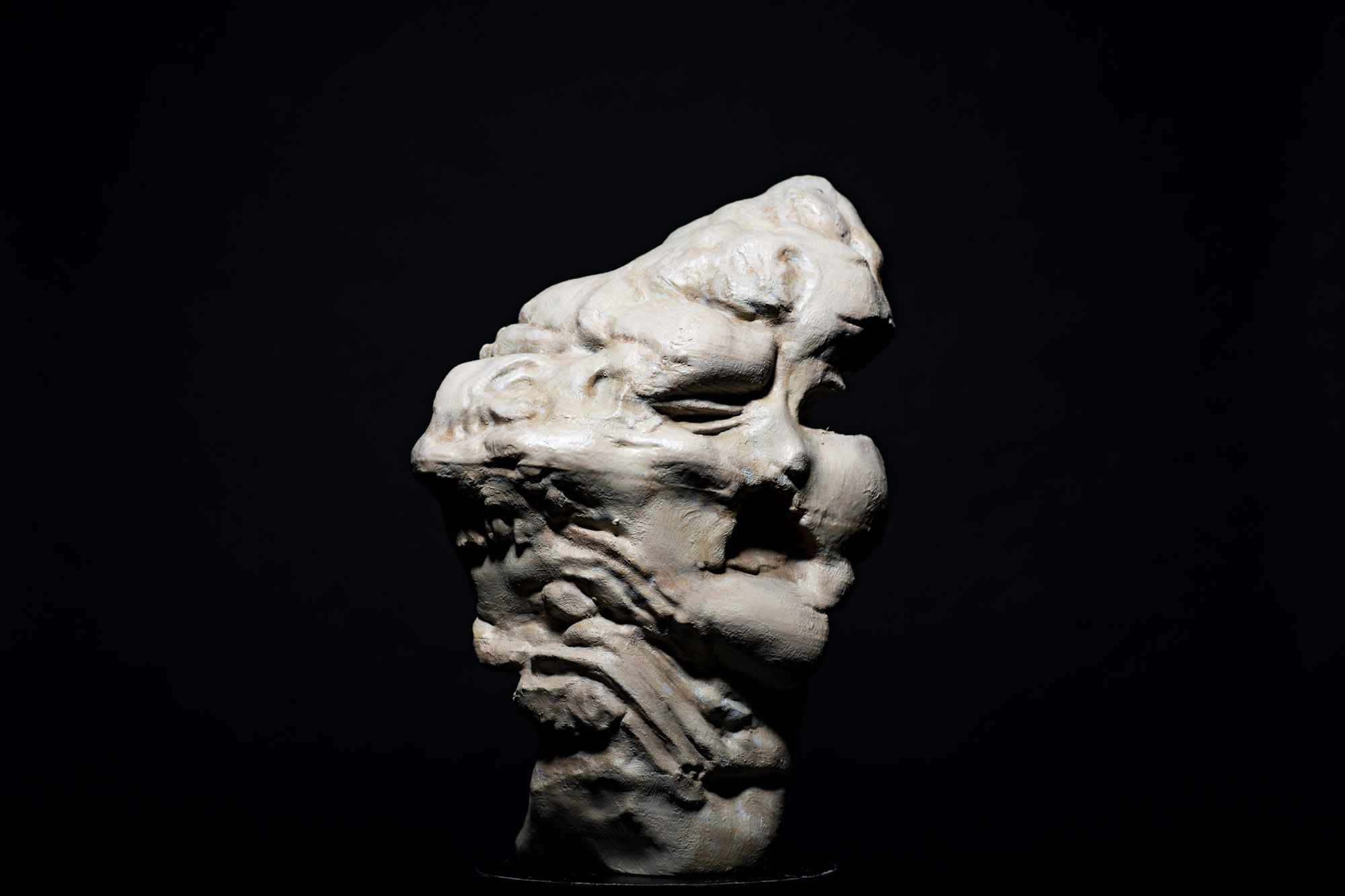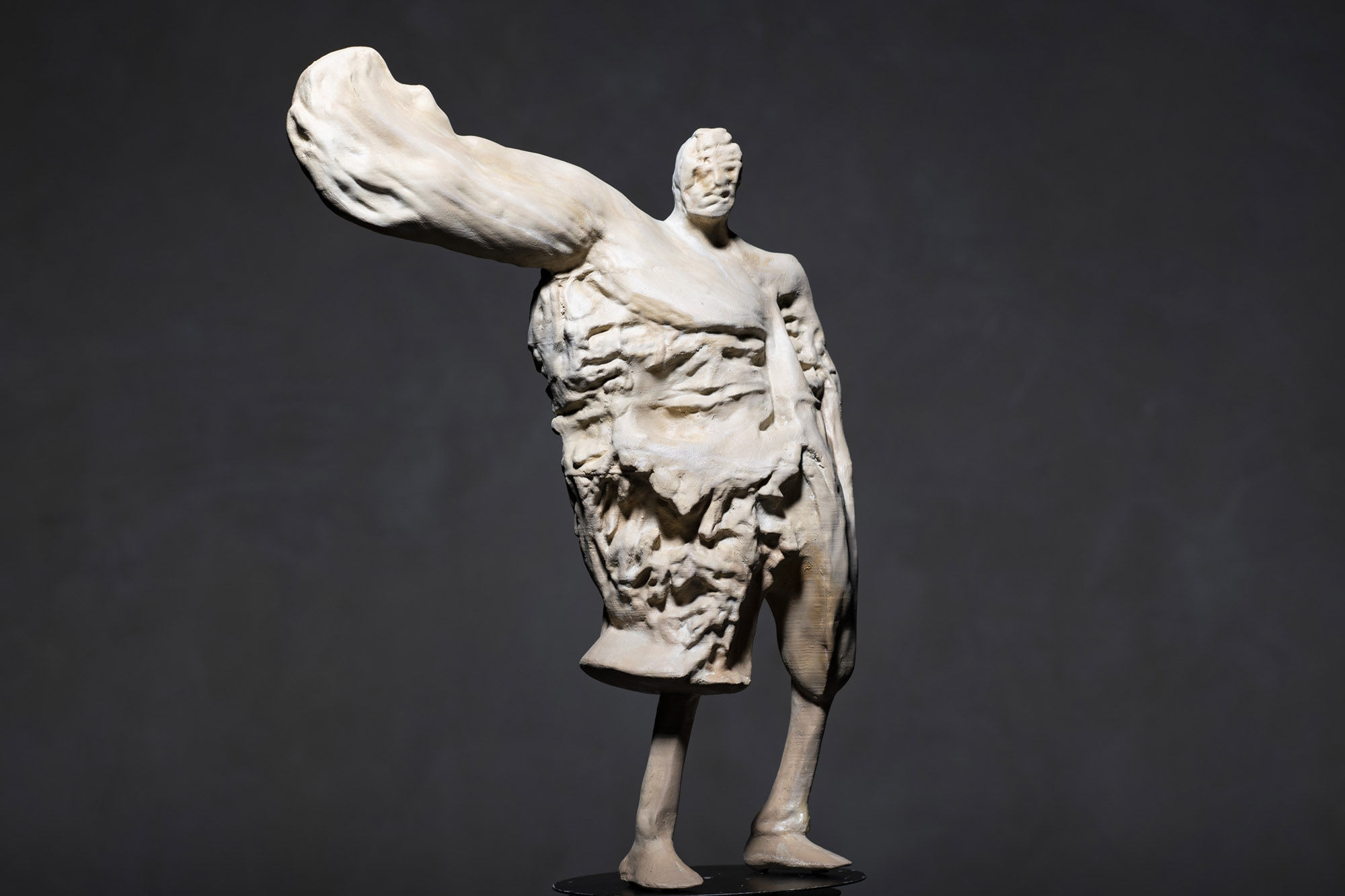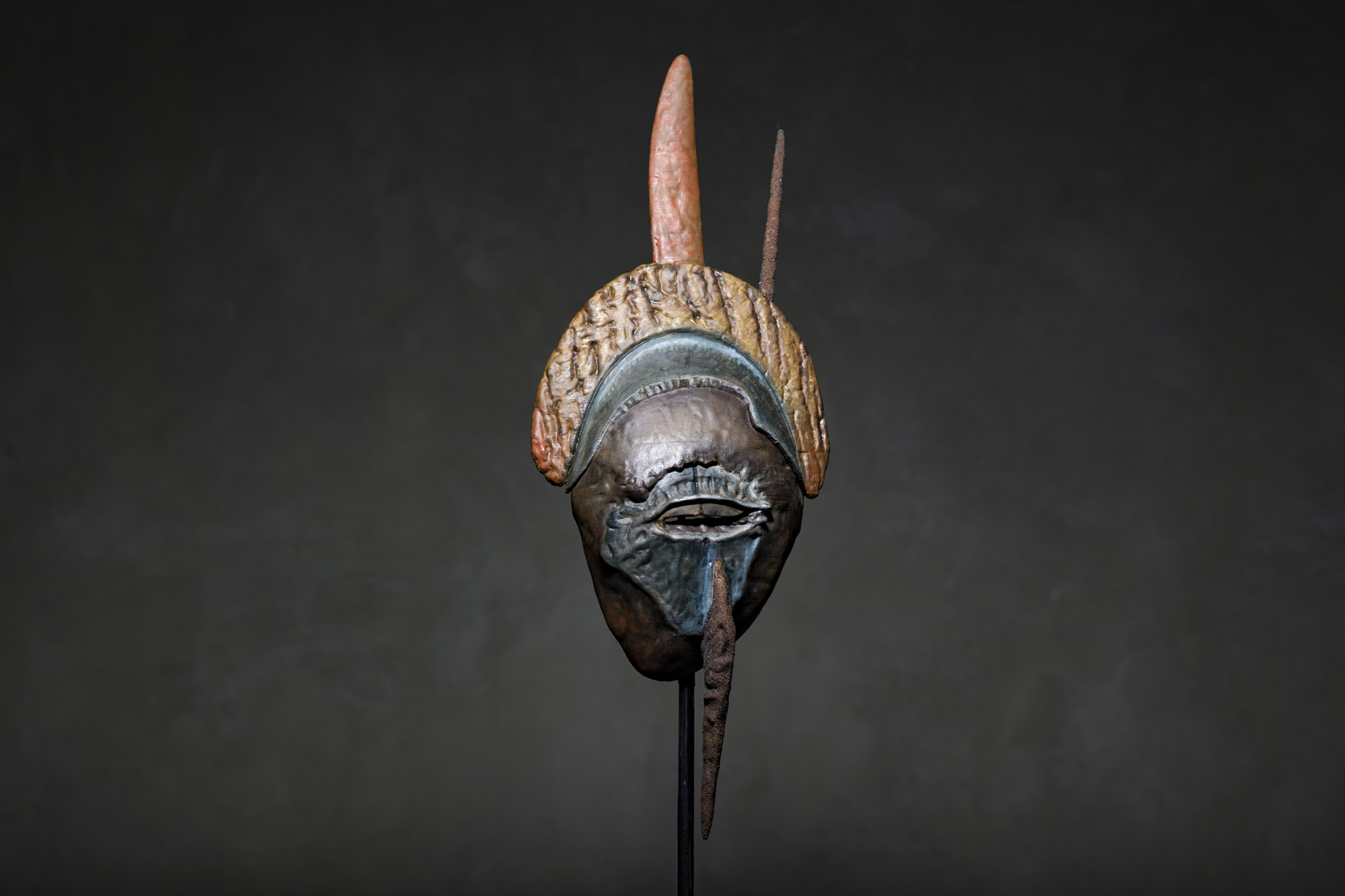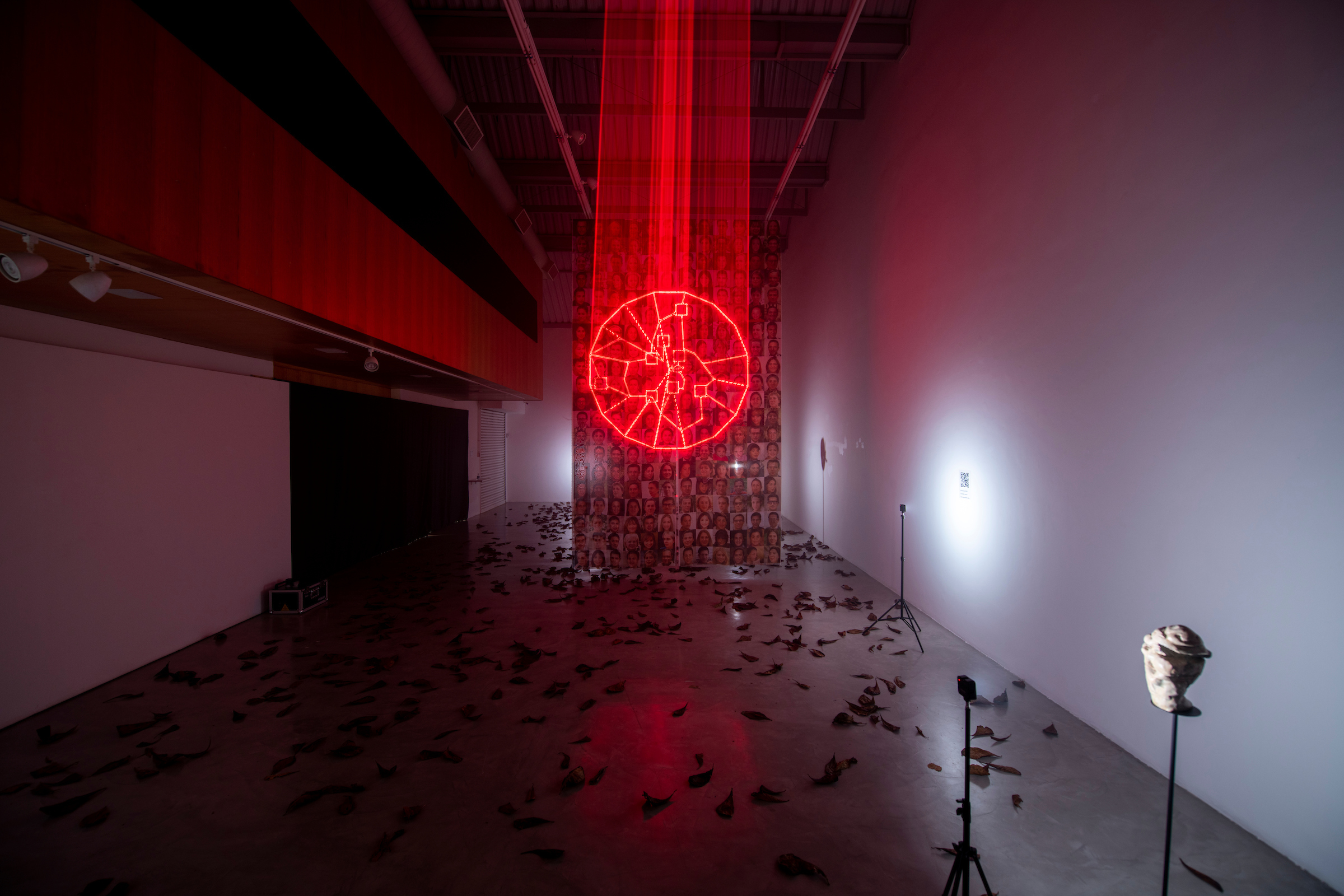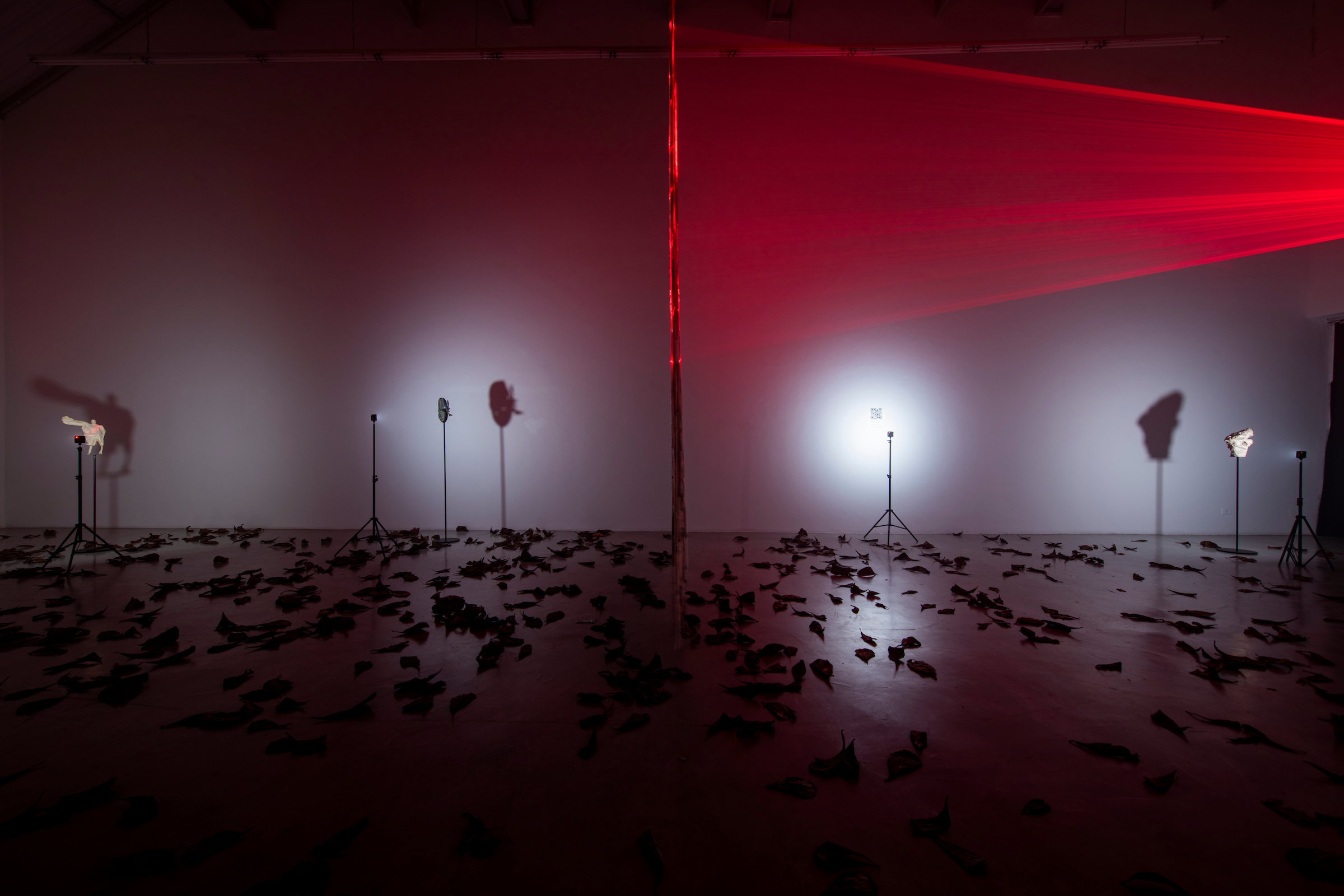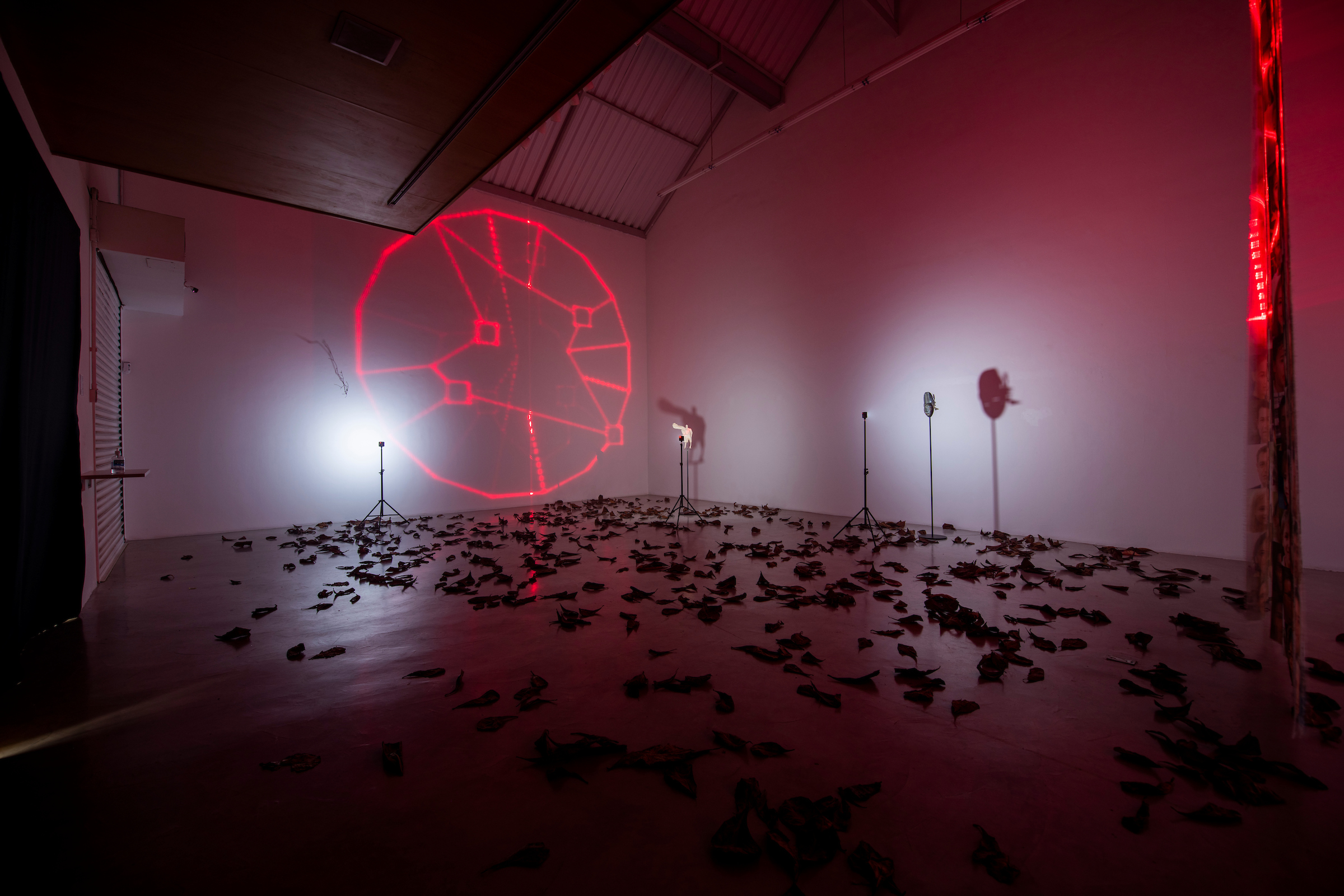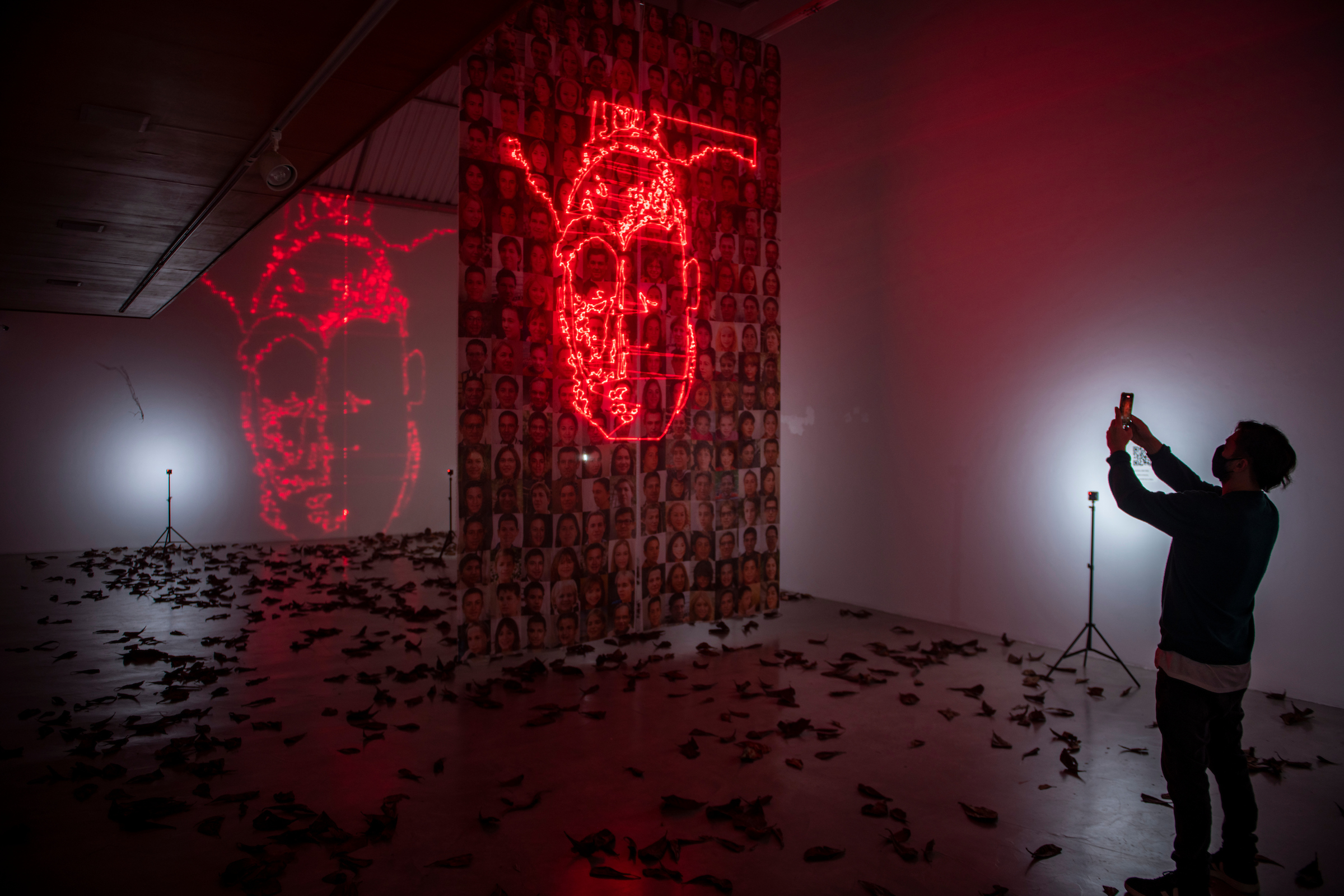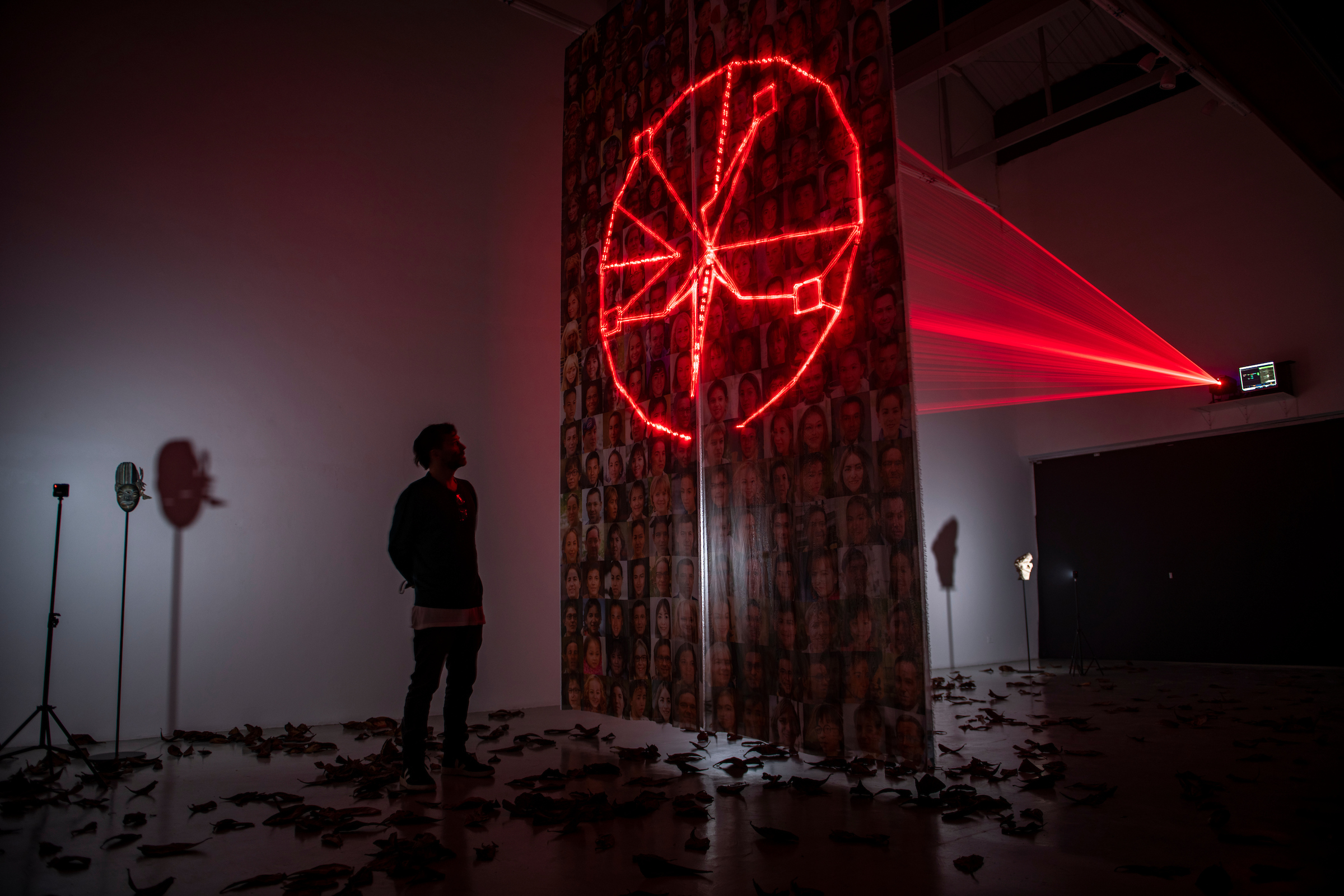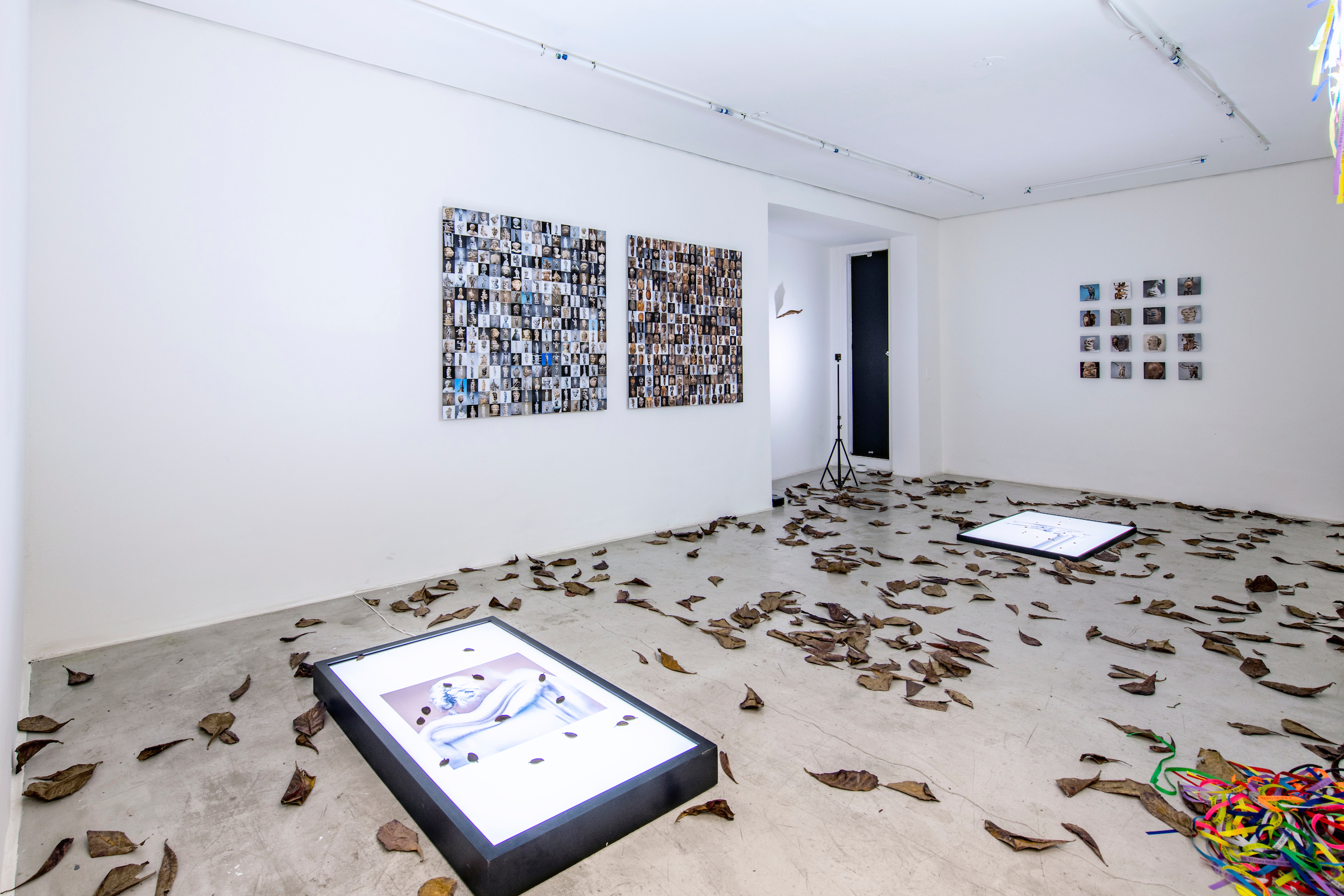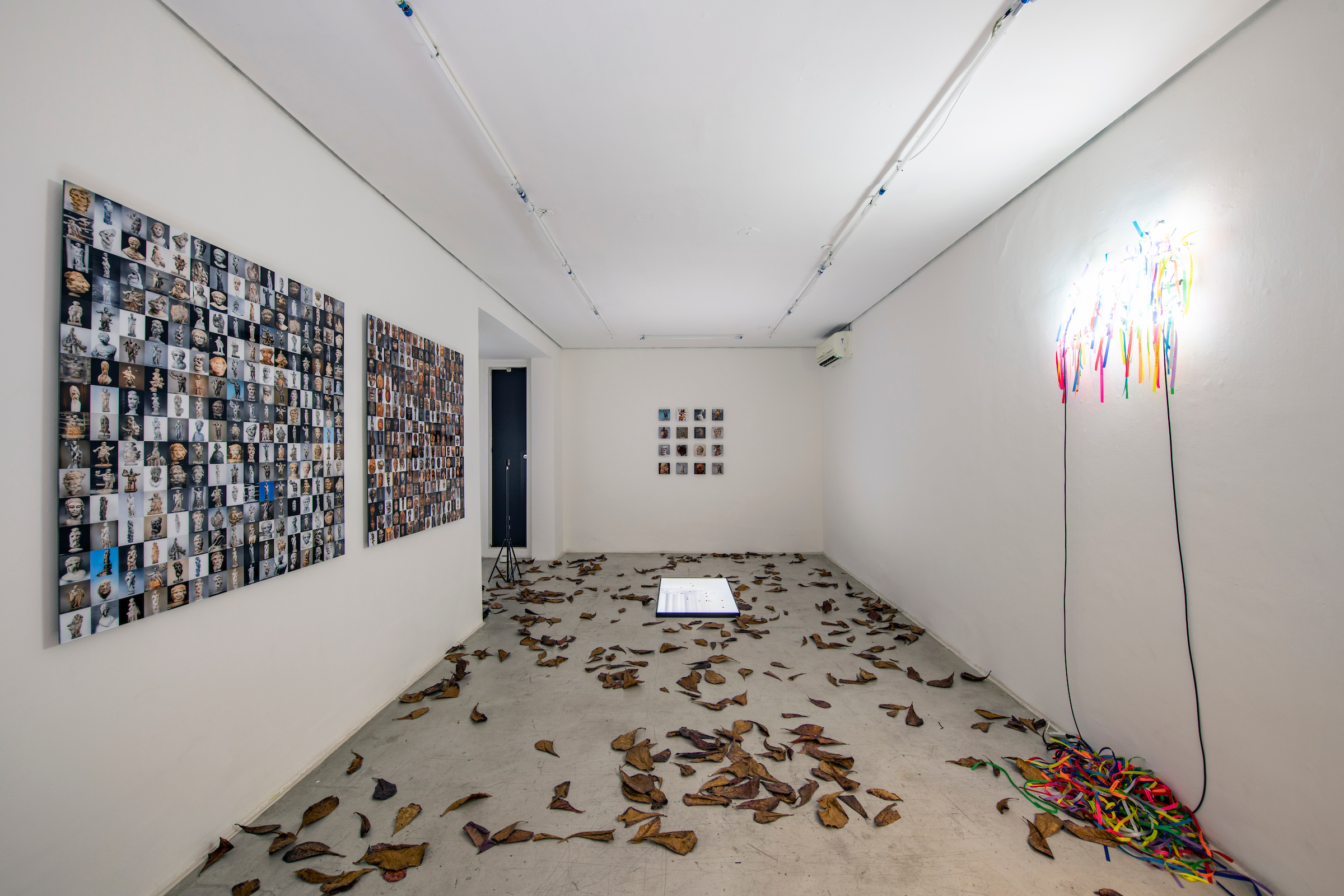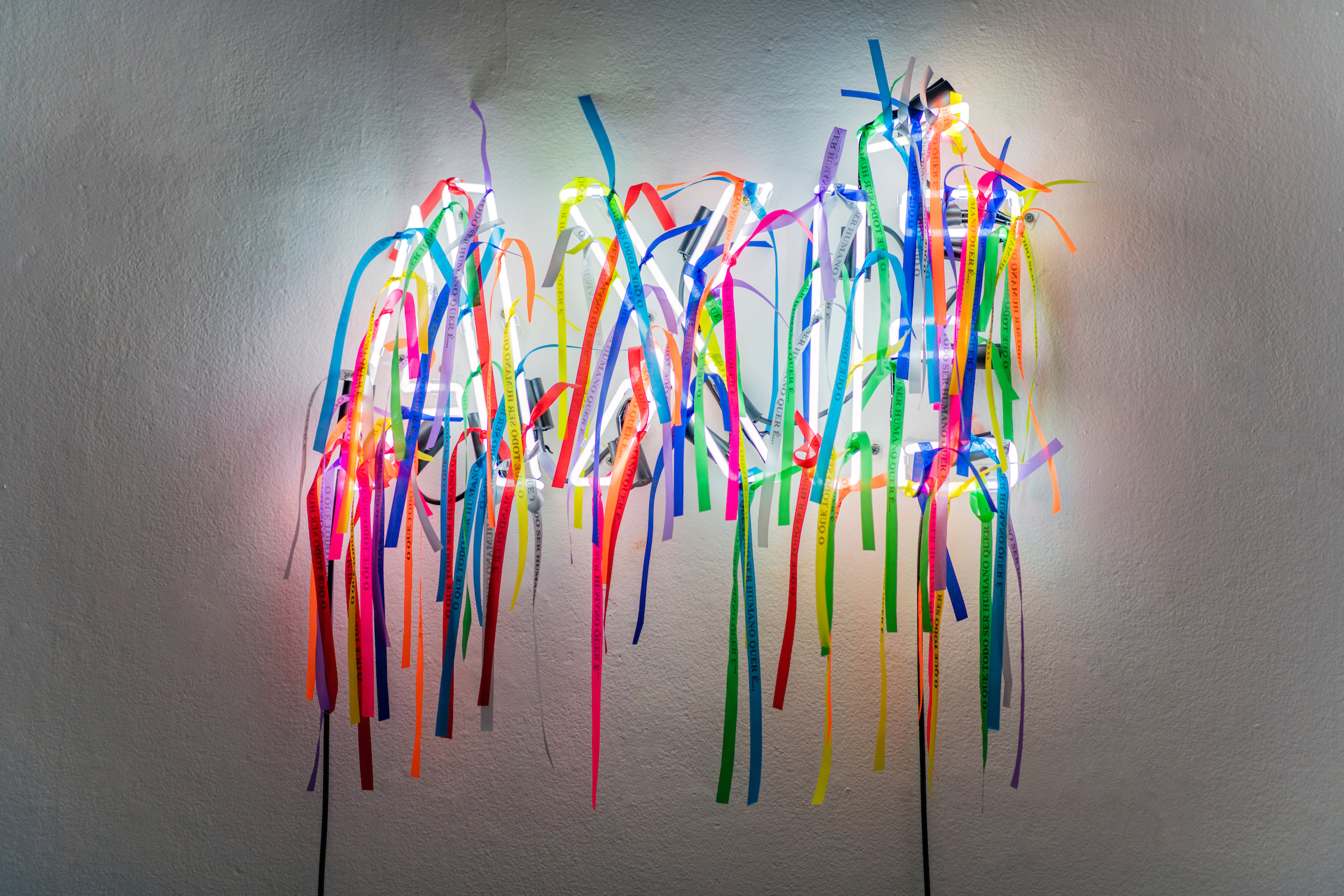Mini doc about the show
---
Gorgon - video presented at the show
---
Critical essay
Rituais da Complexidade
Fernando Velázquez confuses and reorganizes systems, non-places, and collateral information in an aesthetic dialogue starting sometimes from Africa and sometimes from Europe, between ancestral African knowledge and technical-informational procedures of the great metropolises of neo-colonial capital – all revealed through his multimedia experiences. The artist works with algorithms and tensions his biases, navigating through the universe of the arts and the various layers of technology and science in a creative practice dynamized by the ludic and the unexpected. He confronts borders between the past, present, and future, crisscrossing announced destinations, navigating through different interfaces, impressions, and projections. In Complexity Rituals, Velázquez's art manifests itself by rupturing: artist, curator, educator, and enquirer. Who came first?
Images are created from experiments with artificial intelligence, arrived at through algorithms manipulated and trained by Velázquez, where patterns are learned and the machine itself invents other figures that are born from misshapen hybrids, the result of crossovers between Greek and black-African aesthetics. Through a system of binary codes that resembles the Ifá's divinatory system – an oracular tradition of the Yoruba people in which the consultant receives excerpts from mythological narratives in response to their longings, which cross the boundaries of time and establish a sense of community for all life trajectories, with 256 odus, the paths that can lead to countless destinations – the artist investigates the ancient tradition kept by oral knowledge and brought by black bodies from West Africa to Brazil in the past.
Although it requires prior programming, the functioning of the algorithm is autonomous, generating its own images, and creating elements by itself. How is the question of authorship of the work of art dealt with, when the artist merges with the machine in an act of cyborg creation? The plinths of Greek sculptures and masks of African origins used in this art of today provoke us to think about the binomial contemporaneity and tradition, bringing a sense of criticism to the canon, we then see the transformation of the three-dimensional into an “archaeology” of an imperfect and non-existent past and of a future in which it is possible to think about art and technology from other matrices of knowledge that displace the unique idea of Europe as a centre.
Fernando Velázquez, with his art-disorder, combines different sources of thought by disturbing the times, reflecting on contemporary challenges, digital universes, and ancestral epistemologies.
Hanayrá Negreiros
Complexity Rituals - de 28 de agosto à 25 de setembro
Original idea and programming Fernando Velázquez
Text Hanayrá Negreiros
Print and plexiglass Jacarandá Montagens
Sculptures 3D office & Memory Workshop/ André Mendes / Pedro Auricchio / Titina Corso
Set Estudio Base / Leo Ceolín
IA and bot programming: Guima San
TD programming: Gustavo Milward
Laser consultancy: Paulo Fluxuz_
Neon Neon Ena
Consultancy Moisés Patrício
Mointing Install Produtora de Arte
Producers Fernando Velázquez and Andre Larcher (Zipper Galeria)
Documentation: Ignácio Aronovich
Acknowledgement
Lucas e Fabio Cimino, Andre Larcher, Leo Ceolin, Hanayrá Negreiros, Andre Mendes, Moisés Patrício, Titina Corso, Zizi Correia, Paulo Fluxuz_, Gustavo Milward, Guima San, Rodrigo Barbosa, Andre Mafra, Ricardo Macedo, Icaro Silva, Kiko Dinucci, Edinho Almeida, Qudus Onikeku, Q Dance Company, Marco Sacarassati, Gabriel Menotti and Pierre Fuentes.
